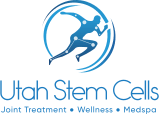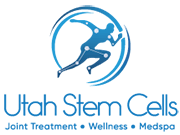Autism is a spectrum of disorders characterized by marked communication and social interactions abnormalities. Two common, consistent findings are associated with children with this disorder: diminished oxygenation in specific areas of the brain and a chronic immunologically mediated inflammatory condition in the gut.
Current investigative therapies for autism attempt to reverse these abnormalities through administration of antibiotics, anti‐inflammatory agents, and hyperbaric oxygen. Unfortunately, none of these approaches address the root causes of oxygen deprivation and intestinal inflammation.
The rationale behind treating autism with umbilical cord tissue-derived mesenchymal stem cells is that autism, and its degree of severity, has been significantly correlated inflammatory and neuro-inflammatory cytokines including macrophage-derived chemokine (MDC) and thymus and activation-regulated chemokine (TARC). Intravenous administration of umbilical cord MSCs has been shown in multiple clinical trials to decrease inflammation. Decreasing inflammation in the autistic patient may alleviate symptoms of autism.
Through administration of mesenchymal stem cells, we have observed improvement in patients treated at our facilities.
The adult stem cells used to treat autism at the Stem Cell Institute come from human umbilical cord tissue (allogeneic mesenchymal). Umbilical cords are donated by mothers after normal, healthy births. Before they are approved for treatment all umbilical cord-derived stem cells are screened for viruses and bacteria to International Blood Bank Standards.
Umbilical cord-derived stem cells are ideal for the treatment of autism because they allow our physicians to administer uniform doses and they do not require any stem cell collection from the patient, which for autistic children and their parents, can be an arduous process. Because they are collected right after (normal) birth, umbilical cord-derived cells are much more potent than their “older” counterparts like bone marrow-derived cells for instance. Cord tissue-derived mesenchymal stem cells pose no rejection risk because the body does not recognize them as foreign.
What are the advantages of treating autism with allogeneic umbilical cord tissue-derived stem cells?
- Since HUCT mesenchymal stem cells are immune system privileged, cell rejection is not an issue and Human Leukocyte Antigen (HLA) matching is not necessary.
- The stem cells with the best anti-inflammatory activity, immune modulating capacity, and ability to stimulate regeneration can be screened and selected.
- Allogeneic stem cells can be administered multiple times over the course of days in uniform dosages that contain high cell counts.
- Umbilical cord tissue provides an abundant supply of mesenchymal stem cells.
- No need to collect stem cells from the patient’s hip bone or fat under anesthesia, which especially for small children and their parents, can be an unpleasant ordeal.
- There is a growing body of evidence showing that umbilical cord-derived mesenchymal stem cells are more robust than mesenchymal stem cells from other sources.
- No need to administer chemotherapy drugs like granulocyte-colony stimulating factor (G-CSF or GCSF) to stimulate the bone marrow to produce granulocytes and stem cells and release them into the bloodstream.
The cost of our BHRT pellets is significantly less expensive than the other possible delivery methods described above.
The appropriate dose of hormone pellets will be individually selected for you to take several different factors into consideration. These include your age, body type, pre-treatment hormone levels, and the degree/types of symptoms present.
The bioidentical hormone pellets are inserted with very little discomfort under the skin in the upper buttocks region just below the pants line. We use a local anesthetic (usually lidocaine) to numb the skin and surrounding tissue, and then a needle is inserted. The very small hormone pellets (about the size of a grain of rice or Tic Tac) are then placed in the hollow needle and slid into the proper place under the skin, in the fatty tissue. You will barely feel the local anesthetic as it numbs the skin and tissue. Most people describe it as hurting less than a flu shot or drawing blood from a vein for routine labs. You will usually feel no pain at all after the skin and tissue has been numbed, and while placing the pellets through the hollow needle. For a couple of days after the procedure, the only discomfort you will experience is similar to that of a mild bruise. You will be able to resume all of your normal activities immediately
following the procedure. We only ask that you avoid any strenuous
activities that specifically target the buttocks muscles for a few days.
We would then have you return to the clinic in 5 weeks for a re-evaluation with the labs repeated. We would review your new hormone levels to see if they are now in the target range and correlate this with the degree of improvement in your symptoms. This helps us determine your correct hormone dosage and adjustments can be made.

